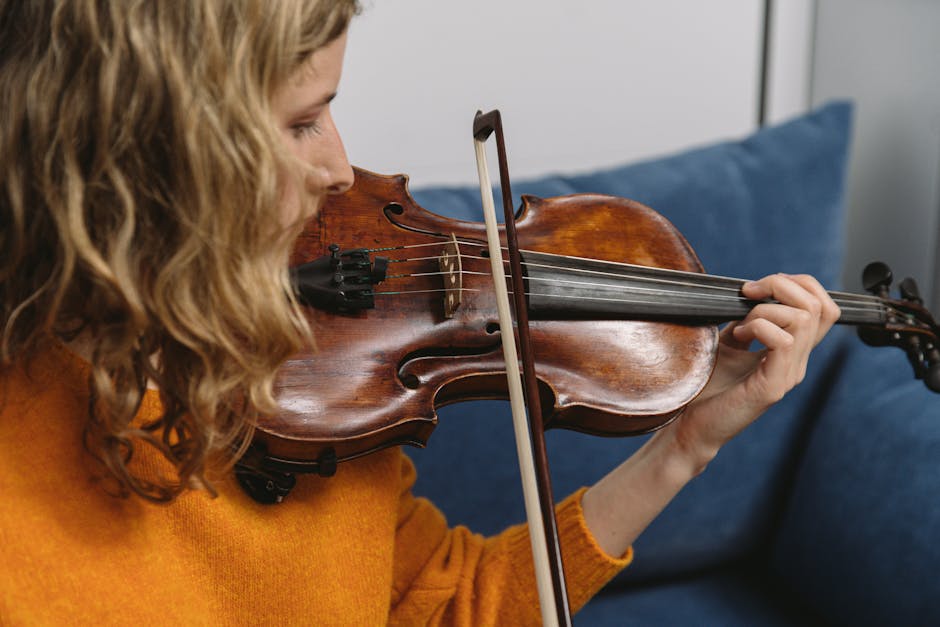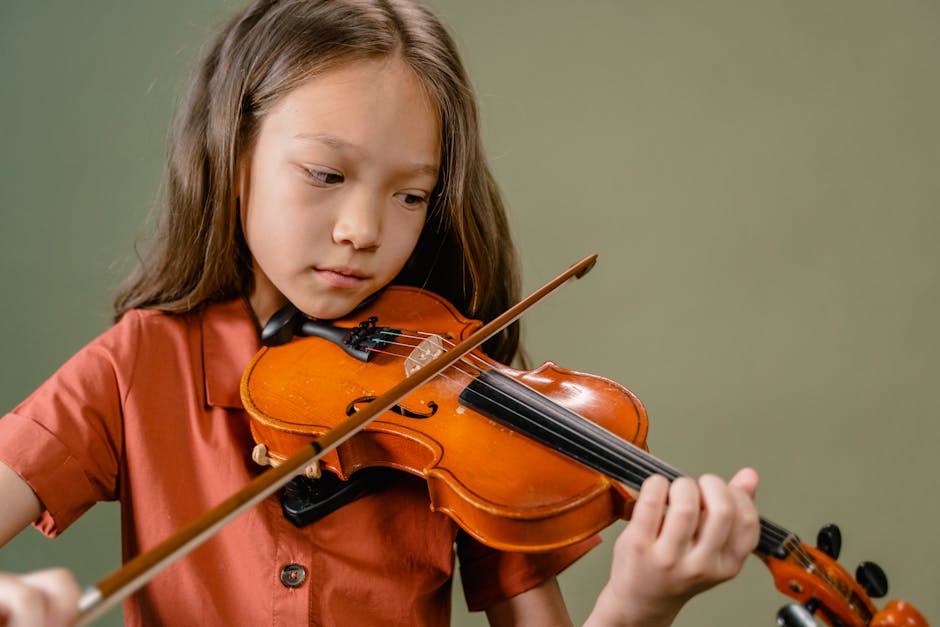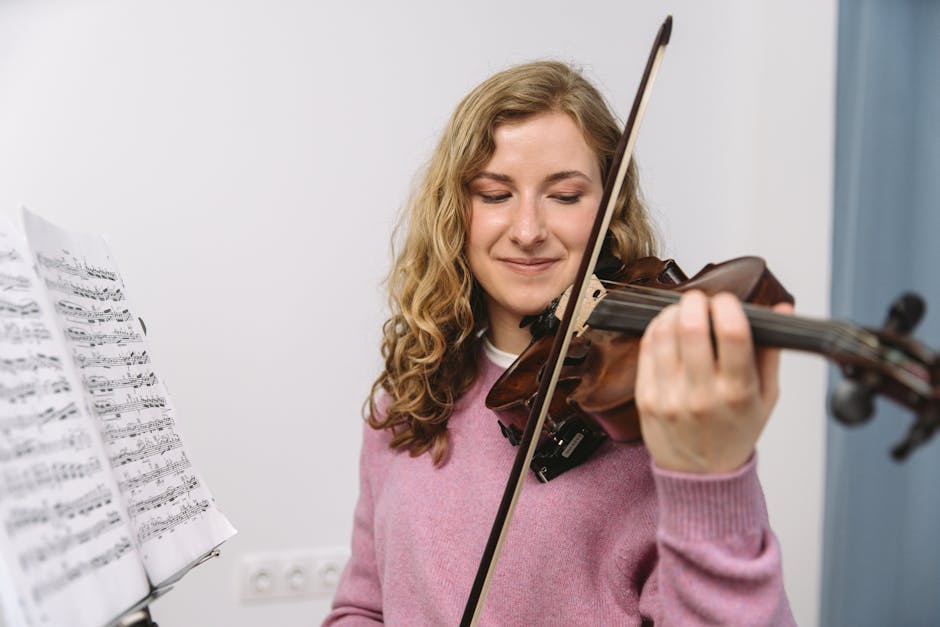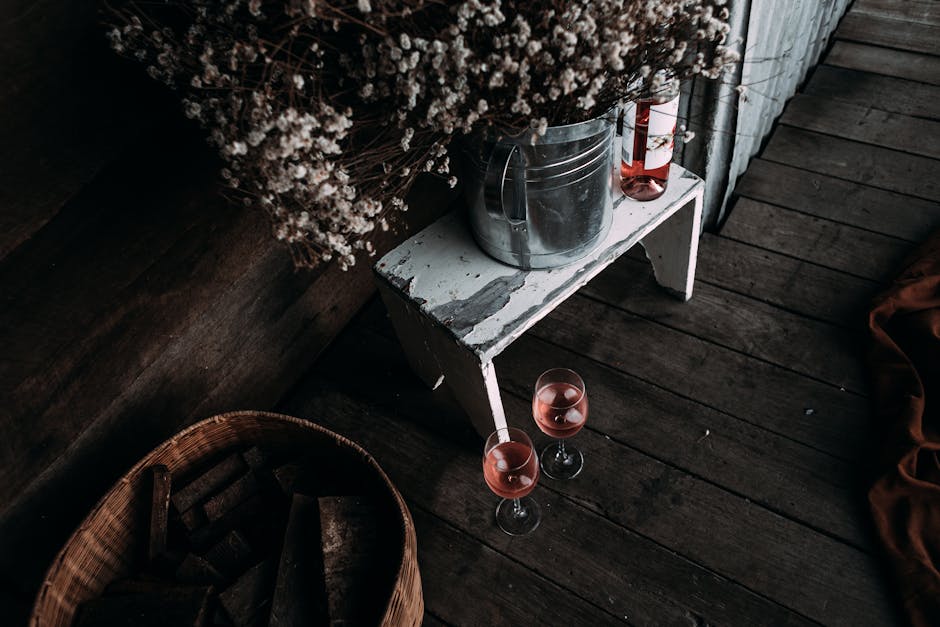Keeping your violin bow clean is essential not only to maintain the quality of the sound it produces, but also to prolong the bow’s lifespan. However, the task may seem a bit daunting, especially if you’ve heard about risky cleaning methods involving alcohol or other harsh chemicals that could potentially damage your bow.
In this guide, we will explore a safer, alcohol-free approach to cleaning a violin bow. This method will not only ensure that your bow is immaculately clean, but also that it doesn’t suffer any unnecessary wear and tear in the cleaning process. Whether you’re a beginner just learning about instrument maintenance or an experienced player looking to switch to a gentler cleaning method, this guide can be of great assistance.
Understanding the Violin Bow: Materials and Parts

The violin bow is crafted from a fine blend of materials, each with a crucial role in the overall performance. The stick primarily uses Pernambuco wood or carbon fiber, while the tension-adjusting screw and heel are often made of ebony. The hair of the bow is meticulously selected from horse tail hairs, providing just the right friction between bow and string.
Understanding these materials and their properties is vital when cleaning your bow, specifically when opting for a method that doesn’t involve alcohol. Delicate spots such as the grip (wrapped in leather or silver wire) and the fragile horsehair require gentle cleaning to avoid damage.
Remember, a clean and well-maintained bow not only ensures longevity but also enhances your performance, contributing to a more precise, vibrant sound. Armed with this comprehension, the process of cleaning your violin bow without alcohol becomes a feasible task.
Why You Should Avoid Cleaning Your Violin Bow With Alcohol

At Kennedy Violins, we value preservation. As such, we recommend avoiding the use of alcohol when cleaning your violin bow.
Why is this important? Well, the answer lies in the makeup of your bow. The hair on the bow is typically made of horsehair which is very delicate. Alcohol has the potential to dry out this horsehair, making it brittle and impeding its functionality over time.
Then there is the bow itself, often made of wood coated with varnish. Alcohol can erode this varnish, dulling the gleam of the wood and eventually leading to damage.
The bottom line – alcohol and violins do not mix! Instead, we recommend using other methods we’ll outline in this blog post, ensuring your violin bow maintains its quality and longevity.
Preparation: Gathering the Necessary Materials for the Cleaning Process without Alcohol
Before initiating the cleaning process, gather all necessary materials. This includes a fine, soft cloth such as a microfiber or silk cloth, specially designed for musical instruments. This cloth type ensures your violin bow is not scratched during the cleaning process. Also, secure a mild, non-abrasive dish soap which will serve as your primary cleaning agent.
Opt for a dish soap since it is different from other cleaning agents in that it contains less alcohol, so it won’t dry out your bow’s wood or damage the horsehair. In addition, prepare another clean, dry cloth for drying the bow after cleaning. Lastly, have a well-lit space to work so you can see any dirt or grime on the bow clearly. The proper preparation is vital to successful and safe violin bow cleaning.
Step-by-Step Guide: Removing Rosin from Your Violin Bow

Cleaning a violin bow requires careful attention to avoid damage, especially when removing rosin buildup. Therefore, follow these simple steps:
1. Start by loosely winding up the bow hair. Make sure it’s not overly tight as it may damage the bow.
2. Next, grab a clean, dry microfiber cloth. The cloth should be soft and dry to prevent damage and effectively pick up rosin dust.
3. Firmly hold the bow by the frog end, then gently pass your cloth along the bow hair from frog to tip.
4. Repeat this procedure, making sure every string is clean. Ensure you don’t touch the bow hair with your hands as body oils can degrade bow hair quality.
5. This procedure should be done after each practicing session to prevent heavy rosin buildup.
Regular maintenance is crucial, especially without using alcohol solvents. Follow this guide to keep your bow in top condition and maintain its harmonic performance.
Cleaning the Bow Hair: Careful Techniques to Achieve the Best Results

Maintaining the cleanliness of your violin bow hair is essential to achieving optimal sound quality. While alcohol-based products are often used, they can cause damage over time.
Begin by slackening the bow hair slightly. Then, gently dampen a soft, lint-free cloth with warm water – not soaking wet, just slightly moistened.
Visually inspect the bow hair. You’ll often see dark, rosin buildup. Starting from the frog and moving towards the tip, gently wipe down the bow hair. This careful motion helps to avoid any potential damage to the delicate hair strands.
Once cleaned, allow the bow to air dry completely before re-tightening the hair. This will help to ensure that no trapped moisture remains, which could lead to mildew or mold development.
Remember, the key to this process lies in being as gentle and patient as possible. In violin maintenance, the focus is always on preserving longevity while enhancing performance.
Caring for the Bow Stick: Attention to Detail for Cleaning and Post-Cleaning Maintenance

Caring for your violin bow stick is just as crucial as maintaining the instrument itself, yet it often goes ignored.
A clean bow stick enhances the overall performance and expands the instrument’s life span. When cleaning, utilise a soft, dry cloth. Gently rubbing it over the bow stick will remove any accumulated rosin dust. Avoid using any liquid cleaners or detergents as these may damage the wood and varnish. Diligence is key in this process.
Post-cleaning, the bow stick’s maintenance should never be overlooked.
Keep the bow in a cool, dry place away from direct sunlight or any heat source. This avoids warping and other potential damages. Moreover, regularly loosening the bow hairs when not in use can prevent any undue stress on the stick. In doing this, you extend not only the life of your bow but also its high-quality performance.
Common Mistakes to Avoid When Cleaning Your Violin Bow

Caring for your violin bow properly is essential to ensure its longevity and sound quality. However, many musicians inadvertently damage their bows when cleaning them.
One common mistake is using too much pressure when wiping down the bow. This can cause undue stress, prompting fractures, and may even damage the bow hair.
Another damaging habit to avoid is using harsh cleaning agents or damp cloths. These can seep into the wood and compromise its integrity, resulting in poor resonance, and possibly warping the wood.
One more mistake many violinists make is neglecting the bow’s hair. A dirty bow hair will not only produce a poor sound but can also damage the strings. Cleaning this requires a different approach than the wooden part of the bow, remember to never touch it with your bare hands because the oils can hurt the hair.
Avoid these common pitfalls to ensure your violin bow remains in excellent condition.
Advice on Keeping Your Bow Clean for Longer Periods: Maintenance Tips

Keeping your violin bow clean is essential for preserving its quality.
Here are a few tips to extend the duration of clean periods:
1. Always handle your bow by the frog, avoiding contact with the horsehair. 2. Use a clean, dry cloth to gently wipe off rosin dust after each practice session; this simple action can significantly prolong the cleanliness of your bow.
3. Regularly inspect your bow for any signs of wear and tear or fungal growth. Early detection allows you to take preventive measures before any real damage is done.
4. Keep your bow in its case when it is not in use. This will offer additional protection from dust and humidity, two common culprits behind dirt accumulation.
Remember, a clean bow not only enhances your instrument’s lifetime but also aids in delivering consistent, high-quality sound.

Leave a Reply